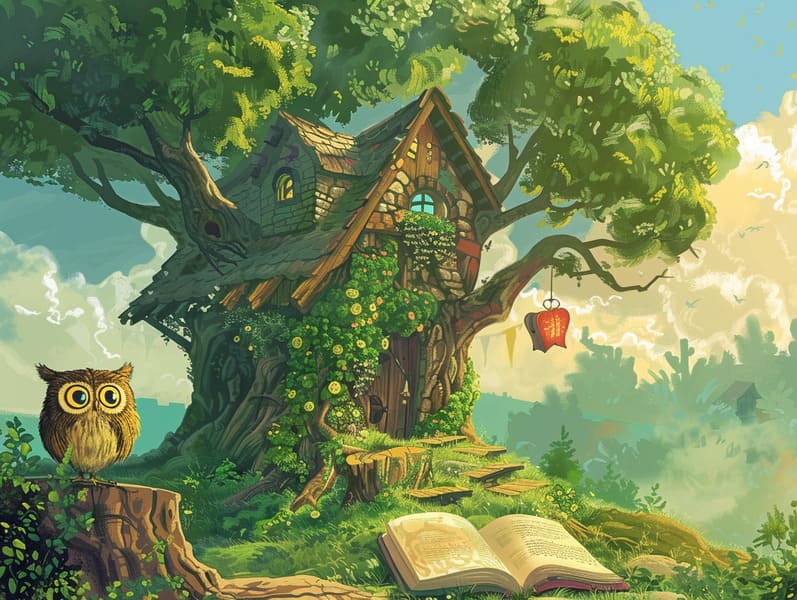
Ancient fairy tales have ancient roots. These tales have been shared from one generation to the next well before they were ever inscribed. They came from a variety of civilizations, including European traditions. They were initially shared among adults, often carrying themes and messages related to the societal norms and beliefs of the time.
Jacob and Wilhelm Grimm, the two Grimm brothers, were among the first to collect many of these beloved fairy tales. Their compilation, "Grimm's Story Collection," included tales like "Cinder Maid," "Hansel and Grethel," and "The True Story of Snow White," which have since become hallmarks in the world of traditional fairy tales. Similarly, Hans Andersen's fantastical fairy tales, such as "The Mermaid," and "The Ugly Duckling," have floated into hearts worldwide, establishing their place in the pantheon of timeless fairy tales.
Despite their age, fairy tales remain as impactful as ever, especially as children's bedtime stories. These enchanting tales are now available in various formats, including vividly illustrated books, captivating animations, and digital fairy tales.
Their continued relevance can be credited to several magical reasons:
Life Lessons: Classic fairy tales often teach important moral lessons. Stories like "The Shepherd Boy and the Wolf" teach the merit of being truthful, while "The Race of the Tortoise and the Hare" illustrate the merits of determination and humbleness. These stories offer young readers clear distinctions between virtue and vice, developing their moral compass in a tender yet important way.
Compassion and Knowledge: Classic fairy tales frequently depict heroines facing problems and hurdles, fostering young listeners to comprehend with their struggles and back their triumphs. For instance, "Beauty's Beast" conveys the significance of appreciating inner worth to appreciate the inner spirit of a being, nurturing understanding and perception.
Cultural Comprehension: Many fairy tales are rich in the cultural contexts from which they bloomed. Engaging with these stories can provide enlightening views into different social structures, building a sense of world appreciation and perception.
Fantasy and Innovation: The supernatural elements in traditional fairy tales—mythical entities—boost children’s dreams. These fairy tales carry readers to magical realms, provoking fantasy dreams and a sense of amazement that lasts a lifetime.
Timeless fairy tales are not only bewitching but also enlightening. They serve as entrancing tools in developing various cognitive and emotional skills in young readers. When traditional fairy tales are read aloud, they strengthen language acquisition by bringing new word meanings and complex sentence structures. This practice also nurtures hearing abilities and attention, as young ones remain attentive, enthusiastic to see what happens next.
Furthermore, examining the themes and characters of ancient fairy tales can advance critical thinking and reasoning skills. The young are taught to discover patterns, forecast, and figure out cause and effect. These talks also encourage young readers speak out their thoughts and feelings, advancing their emotional intelligence.
In today’s digital era, the accessibility of digital fairy tales has made these stories more obtainable than ever. Internet sites and web apps present large libraries of bedtime fairy tales that can be read or listened on anytime, anywhere. Fairy tales told out loud are particularly well-received, sharing an fun way for kids to engage with these charming tales. Read-aloud stories and read-out-loud stories guide characters and settings to life, often complemented by charming audio effects and instrumentals that improve the storytelling experience.
The enduring charm of timeless fairy tales lies in their ability to adapt to present days while preserving their central messages. Contemporary takes of these narratives often bring in more multicultural figures and modern settings, making them familiar to today’s audience. However, the fundamental themes of gallantry, kindness, and equity remain unchanged, continuing to touch readers of all ages.
Old fairy tales also offer a sense of solace and closeness. They make accessible a methodical narrative with a transparent beginning, middle, and end, often winding up with the closure of conflicts and the triumph of virtue over vice. This reliability can be consoling for kids, providing a sense of constancy in an unstable world.
Old fairy tales continue to enthrall and guide new generations, maintaining their fascination and meaningfulness in modern society. As children's night stories, they distribute a perfect blend of enchantment and education, backing moral values, empathy, and creativity. check it out The presence of digital fairy tales and the well-liked nature of fairy tales narrated warrant that these traditional fairy tales remain attainable to new generations.
By retaining and communicating these fairy tales, we continue to honor the rich tapestry of cultural heritage and cultural heritage. Whether you are viewing a vividly illustrated book, exploring a electronic collection, or listening to an narrated book, the splendor of children's fairy tales is always within reach. These fairy tales show us of the unchanging influence of stories and its ability to unite us across epochs and places.
Even if you are accessing a beautifully illustrated book, viewing a electronic library, or hearing an audio story, the majesty of timeless fairy tales is always within reach.
These stories convey of the unceasing influence of narratives and its ability to connect us across eras and regions, making a tie that enchants and educates alike.